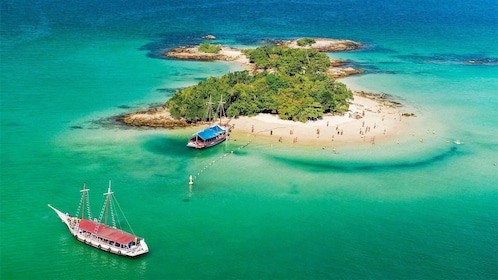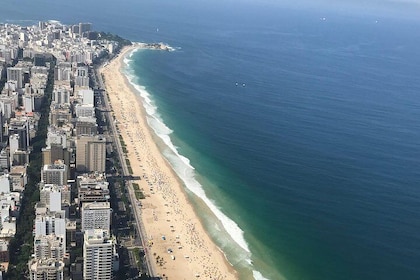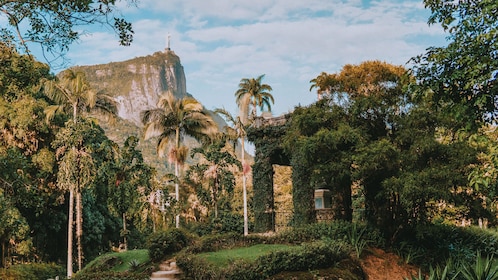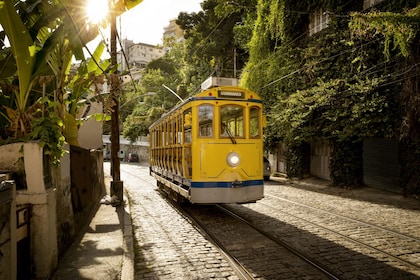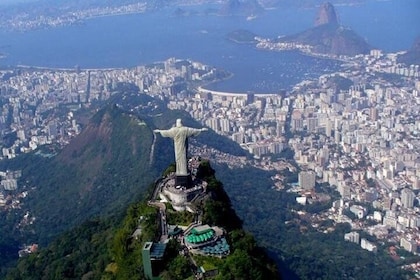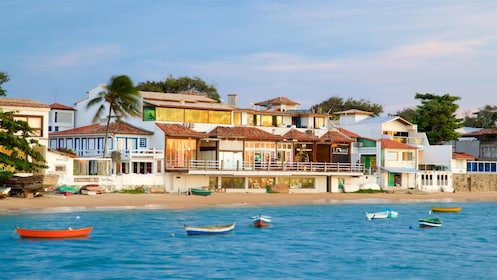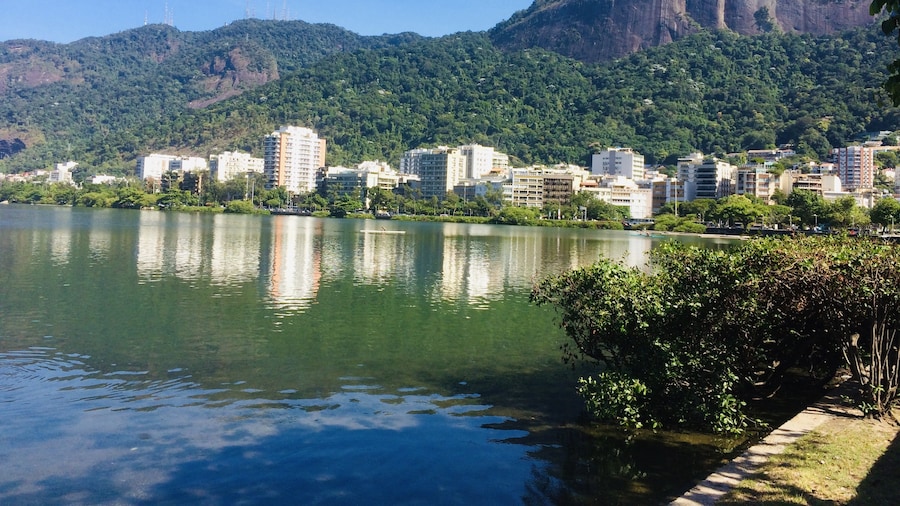Famous the world over for the towering statue of Christ the Redeemer at its summit, this mountain peak is one of the top attractions in Rio.
The distinctive silhouette of Corcovado, or “hunchback” in Portuguese, is clearly visible from all over Rio. This peak stands in the Tijuca National Park, the largest urban forest in the world. Visitors from all over the world flock to see the famous statue of Jesus that crowns this mountain, but the scenic ascent is a breath-taking experience in itself, and the national park has a wealth of natural treasures just waiting to be discovered.
Climb aboard the Corcovado Train for the trip to the summit. This service first open in 1884, and was originally powered by a steam locomotive. Now as you take a seat in the modernised carriages, the electric train will carry you up the steep 3,824-metre track in just 20 minutes.
From the end of the line, you’ll need to climb the 223 steps to the observation deck at the foot of the towering statue of Christ the Redeemer (Cristo Redentor). The recent addition of a lift and escalators provides an alternative for those less sure on their feet. Make sure you have your camera with you, as from this height you’ll be treated to panoramic views including Sugarloaf Mountain and Ipanema and Copacabana Beaches.
The statue itself is the focus of many tourists’ visit. Standing 38 metres tall with its outstretched arms spanning 28 metres, this bright-white figure of Jesus is a truly impressive sight. Construction of this reinforced concrete and soapstone monument began in the 1920s, with materials carried to the site by the Corcovado Train. The work was funded almost entirely by donations from Brazil’s Catholic community. This iconic statue is now counted amongst the “New Seven Wonders of the World”.
Although it is possible to reach the summit of Corcovado by car, this is not recommended. Conditions can be unpredictable and parking is scarce. The Corcovado Train is extremely popular, so do be prepared for a lengthy wait for a seat in peak times.






